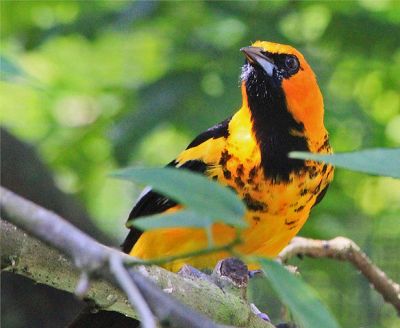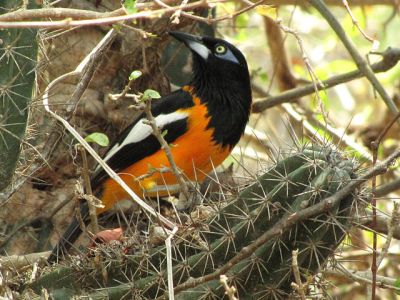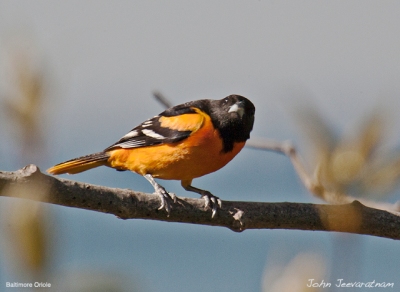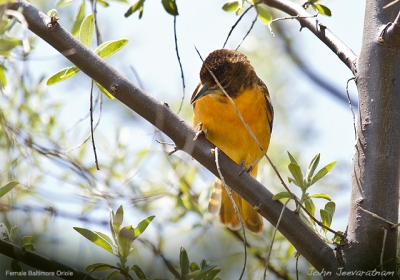“The fear of the LORD is clean, enduring for ever: the judgments of the LORD are true and righteous altogether. More to be desired are they than gold, yea, than much fine gold: sweeter also than honey and the honeycomb.” (Psalms 19:9-10 KJV)
Last week we made it down through the Icteridae – Oropendolas, Orioles & Blackbirds Family to the Red-rumped Cacique. That was just about of a third of the 109 members of the family. Now the list will start with the Icterus genus, which are Orioles. In fact, those are all we will look at today. There are 33 species in that genus and most of them are orioles, except for three Troupials. Troupials (turpial in Spanish), were formerly considered one species.
“A word fitly spoken is like apples of gold in pictures of silver.” (Proverbs 25:11 KJV)
New World orioles, comprising the genus Icterus, are a group of birds in the blackbird family. They are not related to Old World orioles, which are in the family Oriolidae, but are strikingly similar in size, diet, behaviour and in their strongly contrasting plumage. Could it be because they are from the same kind? Predictably, the two have been given the same vernacular name. “Oriole”
“How much better is it to get wisdom than gold! and to get understanding rather to be chosen than silver!” (Proverbs 16:16 KJV)
The males are typically black and yellow or orange, with white markings; the plumage of females and immature birds is duller. These birds go through one moult in a year. They are generally slender with long tails and a pointed bill. They mainly eat insects, but also enjoy nectar and fruit. The nest is a woven, elongated pouch. Several species are easy to attract to bird tables by the provision of cut oranges and grape jelly. Species nesting in areas with cold winters (including most of the United States) are strongly migratory, while subtropical and tropical species are more sedentary.
“Therefore I love thy commandments above gold; yea, above fine gold.” (Psalms 119:127 KJV)
The name “oriole” was first recorded (in the Latin form oriolus) by Albertus Magnus in about 1250, and was stated by him to be onomatopoeic, from the song of the European Golden Oriole.
The genus name Icterus as used by classical authors, referred to a bird with yellow or green plumage. In modern times this has been identified as the golden oriole. (Notes are from Gutenberg’s Icterus (Genus) with editing.)
“That the trial of your faith, being much more precious than of gold that perisheth, though it be tried with fire, might be found unto praise and honour and glory at the appearing of Jesus Christ: Whom having not seen, ye love; in whom, though now ye see him not, yet believing, ye rejoice with joy unspeakable and full of glory: Receiving the end of your faith, even the salvation of your souls.” (1 Peter 1:7-9 KJV)
“It Is Well With My Soul” by Sean Fielder [Hacked]
*
Sunday Inspiration – Icteridae Family I
Icteridae – Oropendolas, Orioles & Blackbirds Family
Appreciating Baltimore Orioles and My First Bird Book
Icterus (Genus) – Gutenberg
Icterid – Wikipedia
*




The Baltimore Oriole and Proverbs 16:16 — what a combination! As you already know — from https://leesbird.com/2015/06/02/appreciating-baltimore-orioles-and-my-first-bird-book/ — I am especially appreciative of Baltimore Orioles!
LikeLiked by 1 person
Thanks. Dr. Jim. I was think about your special likes for the Orioles while I was putting this together, but forgot about the article.
LikeLike